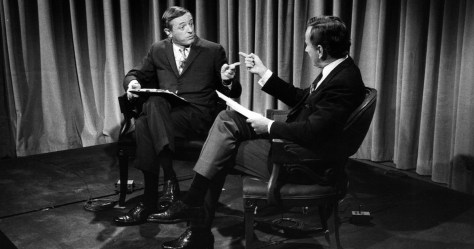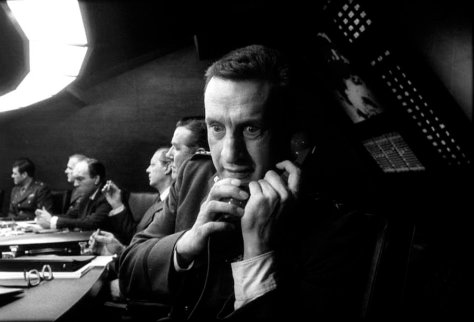By Dennis Hartley
(Originally posted on Digby’s Hullabaloo January 28, 2017)

Travel back with me now to the halcyon days of the chain-smoking star reporter…a time when men were men (and cracked wise) women were women (and cracked wiser), and fake news was but a colorfully enhanced version of the truth (as opposed to “alternative facts”). Actually, this particular version of “reality” existed largely within the imagination of Hollywood screenwriters.

The granddaddy of the genre is Lewis Milestone’s 1931 screen adaptation of Ben Hecht and Charles MacArthur’s 1928 Broadway hit, The Front Page. As Michael Sragow notes in his essay, included with Criterion’s Blu-ray reissue of the film and its 1940 remake, His Girl Friday:
[The Front Page] became famous, sometimes infamous, for its frankness about sleazy backroom politics and reckless, sensationalistic newspapers, and for its suggestive patter and profanity. It brought a crackling comic awareness of American corruption into popular culture, and it made rapid-fire, overlapping dialogue fashionable…
What did he say? “Profanity” in an American film from 1931? Well, this was “pre-Code” Hollywood, which is demarcated by the implementation of the 1930 Hays Code. Not strictly enforced by the major production studios until 1934, the Code set fairly strict guidelines on “morality” and message in films until it finally fizzed in 1968 (don’t laugh…could happen again).
That said, The Front Page seems creaky and tame by today’s standards, and its “rapid fire” dialog is like slow-motion compared to the machine-gun patter of the 1940 revamp (more on that in a moment). Still, its historical value is inarguable, making it a most welcome “bonus” feature.
Bartlett Cormack adapted the screenplay from Hecht and MacArthur’s play, with “additional dialogue” by Charles Lederer (who was later re-deployed to adapt the same source material into His Girl Friday). Adolphe Menjou, Pat O’Brien, and Edward Everett Horton lead the fine cast.
O’Brien plays veteran reporter Hildy Johnson, on his last day at a Chicago tabloid. Much to the chagrin of his boss (and long-time friend) Walter Burns (Menjou), he has given notice and is about to head off to marry his sweetheart Peggy Grant (Mary Brian) and start a new career as a New York ad man.
However, fate and circumstance intervene when an irresistible “exclusive” falls into Hildy’s lap regarding the imminent jailhouse execution of an anarchist, whose sentencing may not have been determined so much in the interest of jurisprudence as it was to benefit city officials up for re-election (political corruption in Chicago-how’d they get that idea?).
Criterion touts this restoration of The Front Page to be the closest approximation to date of the director’s “optimum cut”. It turns out that the iteration we’ve been watching all these years (along with the copy stored at the Library of Congress) was the “foreign” version. In the early 30s, it apparently was not uncommon to shoot three different negatives; one destined for domestic audiences, and one each for British and “general foreign” distribution (I’ll admit I was previously unaware of this practice). As Sragow elaborates:
Cast and crew invariably saved their best efforts for the American version: the freshest, bounciest performances, the sharpest or most fluid camera work and staging, the keenest beats and cadences. For the other versions, filmmakers often rewrote scenes, substituting language and references that would be easier to grasp in other parts of the world. […] In 2014, the Academy set out to restore The Front Page from a 35 mm print that had been part of the Howard Hughes film collection at the University of Nevada, Las Vegas. […] What’s most elating about Milestone’s preferred cut is not merely the restitution of more authentic language but the reclamation of more vibrant rhythms and images.
What he said-and kudos to Criterion for including it in this release.

There’s nothing “creaky” about Howard Hawks’ perennially fresh and funny newsroom comedy His Girl Friday, which is of course the main feature of this Criterion Blu-ray reissue package. Charles Lederer and Ben Hecht (not credited) adapted from the same Hecht and MacArthur stage version of The Front Page, but added some significant twists: pulling a gender switch on two of the primary characters, and modifying the backstory of a personal relationship.
In this version, veteran reporter Hildy is a female character (Rosalind Russell) who quits her job at a New York City paper, disappears for several months, then pops by the newsroom one day with a hot tip for ex-boss/ex-husband Walter Burns (Cary Grant)-she’s off to Albany to marry and settle down with her fiancée Bruce Baldwin (Ralph Bellamy). As in The Front Page, Walter hates the idea of losing his star reporter (for personal and professional reasons).
In his heart of hearts, Walter (who admits that he wasn’t the best of husbands) doesn’t buy the idea that Hildy, a competitive, hard-boiled adrenaline junkie who enjoys nothing more than the challenge of getting the scoop on a hot story, has suddenly decided that settling down in Albany with a milquetoast insurance salesman is the life she prefers. And so he sets about scheming to win her back. At this point, the narrative converges with The Front Page (the subplot involving the condemned anarchist and the corrupt politicians).
What ensues is one of the most wonderfully played and rapidly-paced mashups of screwball comedy, romantic comedy, crime drama and social satire ever concocted this side of The Thin Man. This isn’t too surprising when you consider that director Howard Hawks already had two bonafide classic screwball comedies (Twentieth Century and Bringing Up Baby) under his belt.
Something to observe in repeat viewings is how Hawks masterfully frames all his shots; specifically how he choreographs background action. The natural tendency is to focus on the overlapping repartee (delivered with such deftness and tight, precise pentameter that you could sync a metronome to it), but keep an eye out for sly sight gags that are easy to miss if you blink.
Something that stood out upon my most recent viewing was the nascent feminism of the piece. For a film of its time, it is unusual enough to see such a strong and self-assured female character, much less one so matter-of-factually presented as being on equal footing with her male peers as Hildy. Her fellow reporters look up to her because they all acknowledge her as their best and brightest. It’s incidental that she happens to be a woman. I view Russell’s inspired portrayal of Hildy as the prototype for future TV characters Mary Richards and Murphy Brown; I also see a lot of “her” in Holly Hunter’s memorable turn in Broadcast News.
Criterion’s hi-def transfer is stunning; I’ve never seen this film looking so good. The audio track (crucial in such a dialog-driven piece) is clean and crystal-clear (ditto for The Front Page, which was treated to a 4k transfer, in addition to its new restoration). Extras include an insightful new interview with film scholar David Bordwell about His Girl Friday, archival interviews with Howard Hawks, a new piece about writer Ben Hecht, radio adaptations of both films, and written essays about each film, presented as a faux-newspaper. The best reissue of 2017 so far.














 “Oh…and uh, shug? Don’t forget to say your prayers!”
“Oh…and uh, shug? Don’t forget to say your prayers!”



